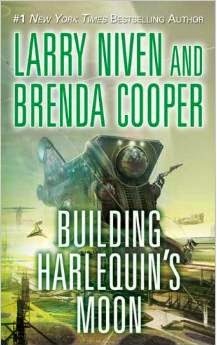The 3D model I've had my eye on since before the printer arrived is in Thingiverse, Thing # 213990 (Octopus Tentacle Stand) by notcolinforreal, published in December last year. This STL file is just under 3MB in size.
This is an attractive design that looks nice in a single color, even white, and I plan to use it to support my Kindle at a comfortable reading angle. (My spouse calls it the Hentai Porn Kindle Holder.) The dimensions of the stand are 210mm x 132mm x 69mm (about 8.25"x5.2"x2.7" high).
The limits of the printer space for the Bukito are 5"x6"x5".
I plan to bring the downloaded model into SketchUp Make, scale it to fit within the Bukito printer space, and then save it back out again—probably as an STL file—so I can open it in the slicing application.
Adding Import STL to SketchUp Make
Checking on the SketchUp web site, I learn that there is an Open Source application—an extension—that adds the ability to import and export an STL file to SketchUp. I read through the reviews, comments and questions about using it from other users on the site, and come away worried that I am adding more issues than the extension will resolve.
In the end, I have no problems downloading, installing, and following the instructions to configure my enhanced SketchUp Make so I can import the TentacleStand.stl file.
Importing the STL File—WHUH?!
Everything was going SO well, and then I tried to use the Extension, selecting File/Import and choosing the STereoscopic Lithograph file type. But once the file is selected, and OKed to import, whatever I click next brings up an endless wait cursor, and the title bar is relabeled: SketchUp Make (Not Responding).
Based on comments others had made on the SketchUp forum about this issue, I try the Run as Administrator option to relaunch SketchUp, but still see the same problem.
Maybe the fact that SketchUp wasn't Run as Administrator when I installed the extension is the issue. I disabled the extension, closed and relaunched SketchUp as Administrator, and re-installed the STL extension. Nope, same problem.
 Then it dawned on me. This file is almost 3MB in size. I went back to Thingiverse, searched "simple" and found a model (a "fishy bag clip") just over 100KB in size. This STL file imports immediately. Another larger model bag clip, just over 1MB in size, takes about 5 minutes to load. Aha! Maybe I just have to wait longer.
Then it dawned on me. This file is almost 3MB in size. I went back to Thingiverse, searched "simple" and found a model (a "fishy bag clip") just over 100KB in size. This STL file imports immediately. Another larger model bag clip, just over 1MB in size, takes about 5 minutes to load. Aha! Maybe I just have to wait longer.
I decide to start the Tentacle Stand import again, and then go do something else, letting it run until it finishes or the PC goes to sleep.
Success In Scaling
Yes, waiting did the trick. It took more than half-an-hour to load the Tentacle Stand Object Model, and 5 minutes of waiting through the "not responsive" status each time I tried to select the whole model.
Each scale, move or rotate attempt took another 34-40 minutes. I was very happy I had spent the time to learn some basics of using the program before I began doing this—it would be painful to wait that long and then have to Undo because it wasn't what you wanted!
In the end, it worked, though. I now have a SketchUp model of the tentacle stand that will fit within the print space of my Bukito. I am not seeing the option to export it to an .stl file, though, but I remember reading something about that in the forum. Time for more research.
So far, I am thrilled and delighted with SketchUp Make, despite the wait time for the complex model.
Export to DAE File Will Work
The Cura slicer program that will send the model to the printer will not open a SketchUp model, but it will open a DAE file, and that is one of the file formats to which SketchUp will export.
I open SketchUp with the intention to Export to DAE, and discover an Export STL option is now in the File menu. Not surprisingly, exporting via this option sends SketchUp into another "Not Responding" wait-state. Now, however, I'm willing to wait.
In just a half-hour, I could be printing my Hentai Porn Kindle Holder!



















